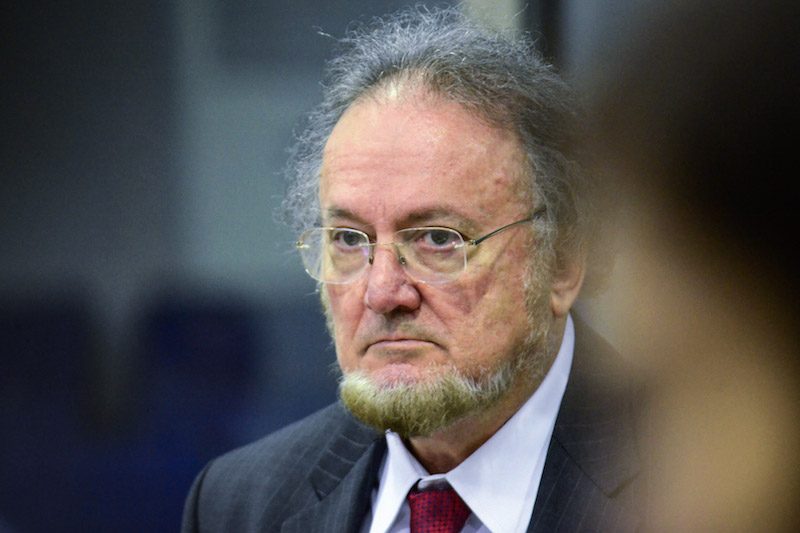Internal purges to eradicate suspected traitors among the Khmer Rouge were the “paranoid” killings typical of revolutionary movements and compromised the regime’s resistance to a Vietnamese takeover, an expert witness told the Khmer Rouge tribunal on Wednesday.
Vietnam had attempted to take control of Cambodia’s communist party following Lon Nol’s coup in 1970, Stephen Morris, a researcher and author of the book “Why Vietnam Invaded Cambodia,” told the court during his second day on the stand in the trial of Khmer Rouge leaders Nuon Chea and Khieu Samphan.

The Khmer Rouge’s purge of officials thought to be associated with Vietnam after they overthrew Lon Nol in 1975 undercut their own inferior forces, he said.
“In the period of the war against the Lon Nol government, I think it was true that there were agents of Vietnam within the Kampuchea communist party and that Pol Pot was correct in thinking so,” he said.
However, “not all the Khmer-Viet men…turned out to be loyal to Hanoi,” he said of the agents, adding that those who were loyal had largely been killed by 1975.
Having defeated Lon Nol, the Khmer Rouge aimed to outdo China, making their communist party “hyper-Maoist,” he said.
“There was a sense, a frantic sense, of a need to go faster and to create what the Democratic Kampuchea leaders thought would be the purest form of communist revolution,” Mr. Morris told the court.
“A lot of the domestic policies of Democratic Kampuchea were in fact modeled on the Great Leap Forward,” he said of Mao Zedong’s economic and social campaign in the late 1950s and early 1960s, which historians believe led to the death of tens of millions of Chinese people. “Taking people to the countryside from the cities, an emphasis on manual labor as personal liberation—these things were ideas of Mao Zedong.”
But as the Khmer Rouge attempted to make Cambodia uniform, tensions were rising with its eastern neighbor.
In April 1977, Pol Pot launched attacks on civilians in southern Vietnam. But, with his forces failing to gain the upper hand, Cambodia again followed the Maoist model by starting internal purges —a “paranoid political culture which permeates all revolutionary movements,” Mr. Morris said.
“It was a paranoid fantasy on the part of Pol Pot to think that people within the party, who had been loyal to the party over a long period of time, were in fact agents of Vietnam,” he said.
“It severely weakened Cambodia’s ability to engage in conflict with any neighbor.”
Mr. Morris said the purges were also an attempt by Pol Pot to account for Cambodia’s poor battlefield performance against Vietnam, which eventually invaded and ran the Khmer Rouge out of power in January 1979.
In Pol Pot’s thinking, he said, “the people in the Eastern Zone who took the brunt of the fighting of Vietnam…must have been traitorous in order not to defeat Vietnam.”




